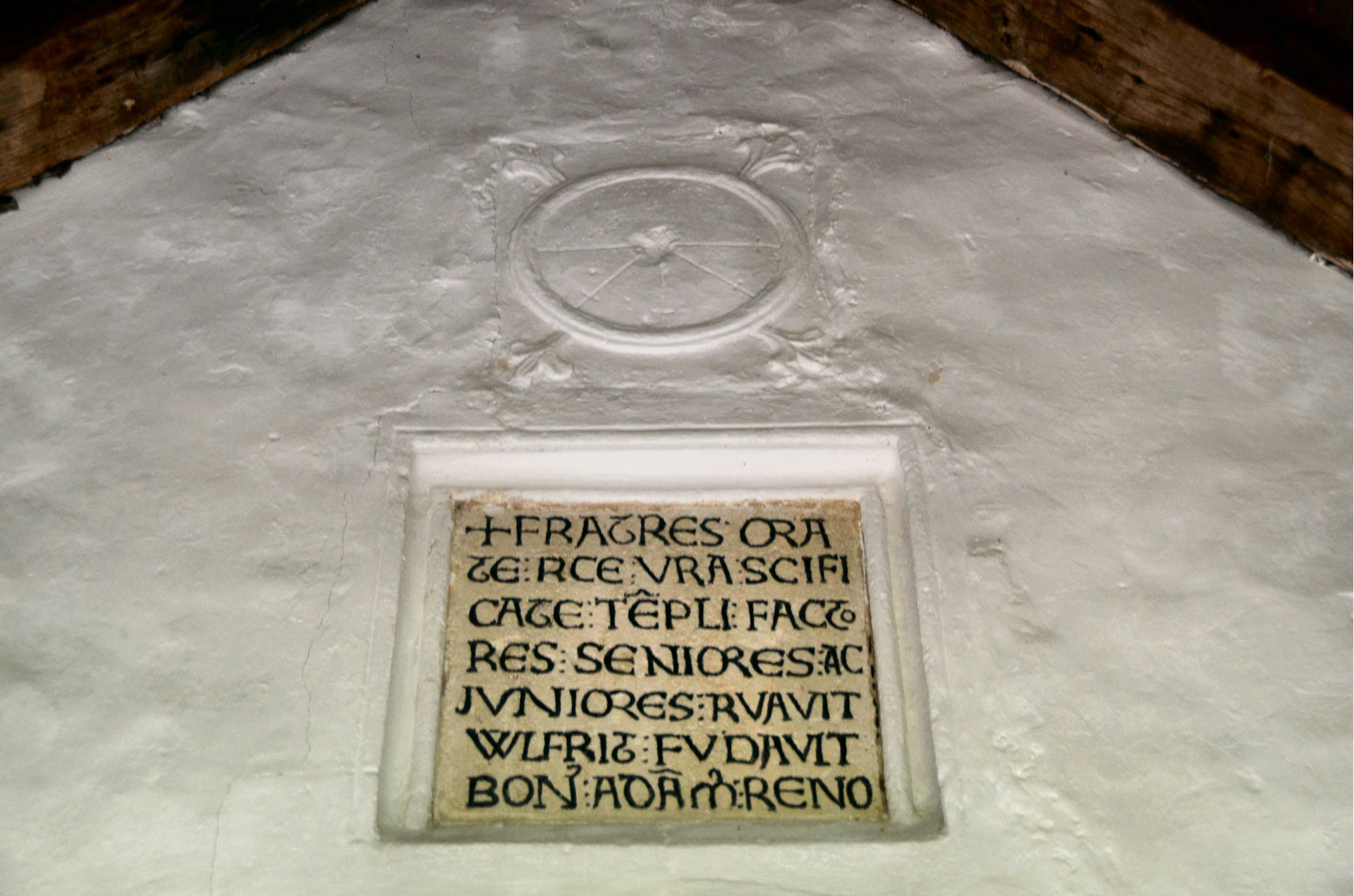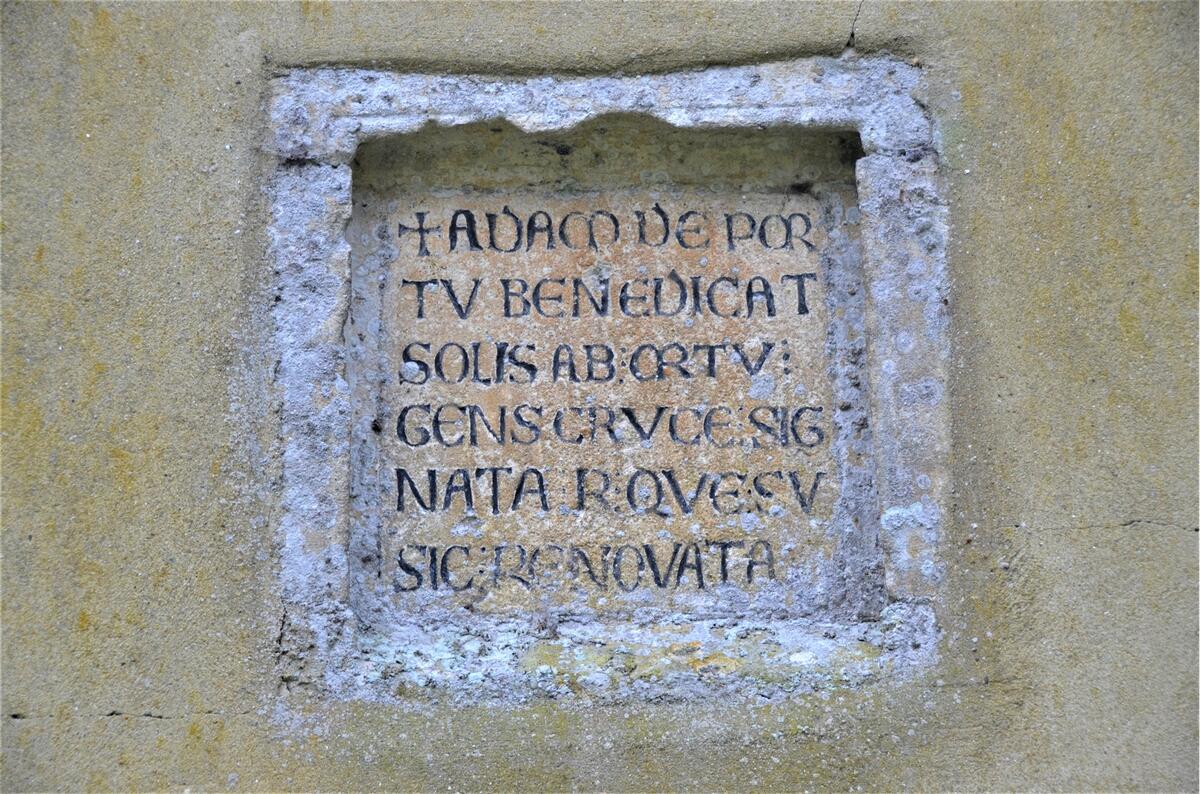The Porches
South Porch
This, the only existing porch, was built about 1190 with the Nave, with a plain pointed arch and stone benches. Porches were much used in medieval times: weddings were solemnised ‘at the church door’ where the Wife of Bath had five - and the porch sheltered the parishioners who came to service from a distant part of the parish.
At Warnford, there are two incised sundials on the east quoins and two faint dials on the west identifiable by the holes for the gnomon. The great interest in this porch lies in the Saxon sundial and in the inscription below it.

The sundial can be compared with those at Corhampton and at Daglingworth (Glos.). It is circular on a square stone with leaves carved at the corners; and it has five crossed lines in the lower half, to mark the middle of the Saxon 3-hourly tides. It is most unlikely that such a carving would be placed on a wattle and daub building, and it supports the theory of a stone pre-Conquest church.
Below the sundial there is a 12th century inscription:
Fratres orate (p)r(e)ce v(est)ra s(an)c(t)ificate
Te(m)pli factores seniores ac iuniores
W(i)lfrid fu(n)davit bon(us) Adam(us) renovavit.
“Brethren bless in your prayers the founders both old and young of this temple. Wilfrid [or Wulfric] who founded it and good Adam who restored it"
Here, there is some debate about the individual named here. If Wilfrid, that could reference the founding of the church by St Wilfred in 682, or potentially if Wulfric could refer to the owner of Warnford Estate between the 1050's and 1066. I think it likely it refers to Wilfred.
The Former North Door
There is now no door on the north side of the church. But historically such a door has been considered possible where there is an inscription of the same date as that in the south porch, and in a symmetrical position on the north wall. An article in the Archaeological Journal, 1935, mentions “the north door, now built up”.
The inscription reads:
Adam de Portu benedicat solis ab ortu
Gens cruce signata (pe)r que(m) su(m) sic renovata.
“May the people signed with the cross from the rising of the sun bless Adam de Port by whom I have been thus restored.”

Adam de Port in the inscription refers to one of the great de Port family, the holders of a great estate of some 50 manors in Hampshire after the Conquest including that of Warnford, and rebuilder of this Church.